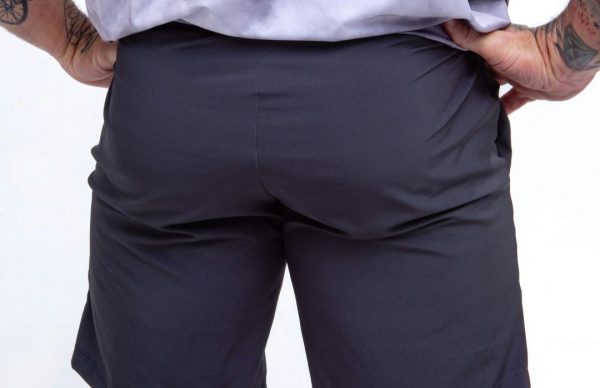Dead butt syndrome. It sounds like the punch line of a bad joke. In fact, you’re probably already rolling your eyes and thinking, “Come on Doc, give me a break! There’s no such thing.”
Actually, there is… kind of.
Some experts are calling it gluteal amnesia. Others call it sleepy glutes. But “dead butt syndrome” makes for a great headline, right?
While there is no official medical term for this condition, it really is an important health concern. It’s something that happens when your butt muscles (the gluteal muscles, in particular) have been inactive for so long that they become weak and “forget” how to work.
It might sound like a silly thing to think about, but when your gluteal muscles become weak and fail to activate, it can lead to serious injuries and chronic pain.
People with low muscle strength in the butt are more likely to experience knee pain, lower back problems and hip instability. Walking up and down stairs can become painful or difficult.
Weak butt muscles can make it hard to maintain balance while lifting and carrying. They can also affect your gait by causing instability while walking, jogging or running.
These shortcomings can easily result in falls, fractures, sprains and strains. It could even lead to an ACL (anterior cruciate ligament) injury. This is the rubber band-like ligament behind the kneecap and connects your shinbone and thighbone.
Does Your Butt Need to Be Reactivated?
One way we test for dead butt syndrome is with the Trendelenburg test. It’s pretty simple to do. Just stand straight, then bend one leg at the knee and raise it in front of you.
If your hip or pelvis drops down or backwards on the unsupported side when you raise your knee, you likely have weak gluteal muscles on that side. Those muscles simply can’t hold the pelvis up when the leg is in the air.
In this case, it’s time to revive your glutes. And believe me, there are plenty of ways to get them firing properly again. All it takes is a little butt and leg action.
Squats, bridges, planks, lunges and side leg lifts are all great ways to reactivate your butt muscles. If you can do them and already participate in these activities, I heartily encourage you to continue doing so. It will protect you from gluteal amnesia in the coming years. This, in turn, will help prevent back, knee, hip and leg pain – some of the most common aches and pains that debilitate us as we age.
However, if you have been inactive long enough that your gluteal muscles have already started to “forget” how to work, you probably need to get started with some easier activities.
Easy Ways Stimulate Your Butt Back into Action
Gluteal squeezes are one of the easiest things you can do to get your butt muscles firing on all cylinders again.
You can do them when you wake up in the morning. Just lie on your back while in bed and squeeze your buttocks together for up to 30 seconds and repeat 10 times.
Then, keep doing them during the day. Start off in a standing position with your feet slightly wider than the width of your shoulders. Next, squeeze your butt muscles as hard as you can and hold for 30 seconds. Repeat three or four times, and perform this little exercise often throughout the day.
Hip abductions are also great. You can do these first thing in the morning after you do your gluteal squeezes. (If you can’t do side leg lifts, these are a great alternative to get you started.)
While lying on your back in bed, slide your right leg out to the side as far as you can while keeping your toes pointed to the ceiling. Then do the same with your left leg. Repeat 10 times on each leg. Take a few minutes to catch your breath, then perform another 10 repetitions per leg.
Like gluteal squeezes, you can also do this exercise during the day while standing.
Stand in front of a table or kitchen counter for balance. Then, lift your right leg outward with your knee straight and toes pointed forward. Repeat 10 times on each leg. Take a break and then do it again.
Perform step-ups two or three times a week to help revive your derriere. They not only activate your gluteus muscles; they also engage other hip extensor muscles.
But you’ll need something to step onto.
You can use the bottom step of a staircase, a porch step or even a small step stool. Or you can invest in a step-up box. Simply step up with your right foot, followed by the left. Then, step back down with the right foot, once again followed by the left.
Repeat 10-15 times starting with your right foot. Then do 10-15 more leading with your left. Do three sets.
I recommend starting with some of the easier activities outlined above (with the approval of your doctor) and proceeding to harder butt-building exercises as your glutes gain strength.
SOURCES:
Buckthorpe M, Stride M, Villa FD. Assessing and treating gluteus maximus weakness – a clinical commentary. Int J Sports Phys Ther. 2019 Jul;14(4):655-669.
Rowe J, Shafer L, Kelley K, West N, Dunning T, Smith R, Mattson DJ. Hip strength and knee pain in females. N Am J Sports Phys Ther. 2007 Aug;2(3):164-9.
Reiman MP, Bolgla LA, Loudon JK. A literature review of studies evaluating gluteus maximus and gluteus medius activation during rehabilitation exercises. Physiother Theory Pract. 2012 May;28(4):257-68.
Jeong U-C, et al. The effects of gluteus muscle strengthening exercise and lumbar stabilization exercise on lumbar muscle strength and balance in chronic low back pain patients. J Phys Ther Sci. 2015 Dec; 27(12): 3813–3816.
Stastny P, Tufano JJ, Golas A, Petr M. Strengthening the Gluteus Medius Using Various Bodyweight and Resistance Exercises. Strength Cond J. 2016 Jun;38(3):91-101.



